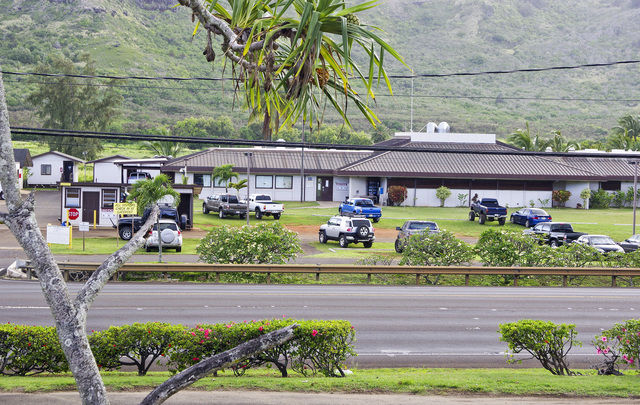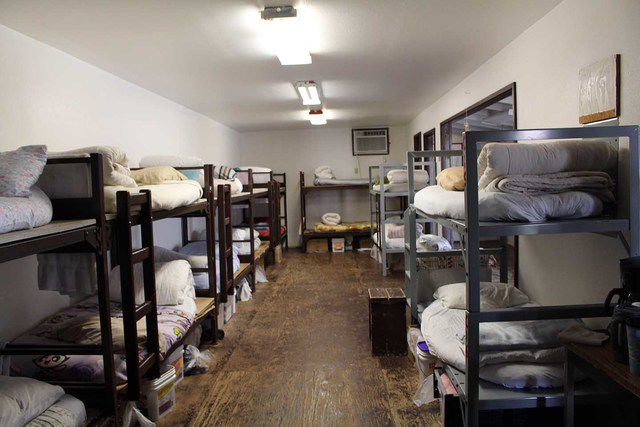WASHINGTON — A bill aims to reduce the national recidivism rate by allowing prisoners the chance to earn an education while also lowering corrections spending and improving safety. That’s the goal of the REAL Act, or Bill 3122, which was
WASHINGTON — A bill aims to reduce the national recidivism rate by allowing prisoners the chance to earn an education while also lowering corrections spending and improving safety.
That’s the goal of the REAL Act, or Bill 3122, which was recently introduced by Hawaii Sen. Brian Schatz. The bill would reinstate federal Pell Grant eligibility for individuals incarcerated in federal and state penal institutions.
“Giving those in prison the opportunity to earn an education has not only proven to be a successful tool for reducing recidivism and crime, we also know it will save taxpayer money,” Schatz said.
Giving prisoners a chance to get educated while they spend time behind bars is vital for their rehabilitation, said Hawaii Department of Public Safety spokeswoman Toni Schwartz.
The Corrections Program Services’ Education Branch provides learning opportunities for incarcerated adults through developmental, academic education and workforce development programs that focus on preparing adult offenders for their transition and reintegration into the community upon their release, Schwartz said.
The average national recidivism rate for released prisoners is 43.3 percent, according to a 2011 report by the Pew Center. A recent report found that the Hawaii recidivism rate is at 48.9 percent.
The goal of the study, which was commissioned by a collection of government agencies called the Interagency Council on Intermediate Sanctions, is to reduce the total recidivism by 30 percent over a 10-year period. The rate started at 63.3 percent in 2002.
Recidivism rates lower on Kauai
On Kauai, people aren’t quite as likely to be rearrested as much as they are in other Hawaii counties, according to the ICIS report.
“The judiciary’s probation works with offenders on a regular basis, but it is only one piece of a big picture, which also includes corrections and treatment services,” said Tammy Mori, judiciary spokeswoman. “That is why about 15 years ago, the judiciary engaged all groups in hopes to increase our collaboration, communication, and ensure we are implementing the best practices.”
Kauai County had the lowest total recidivism rate for felony probationers, the lowest total revocations-violations rate and the lowest criminal contempt of court rate, the report showed.
The recidivism rate for felony probationers on Kauai was 40.8 percent compared to 52.6 percent on Maui, 45 percent in Honolulu City and County, and 54 percent in Hawaii County. Maui had the highest criminal rearrest rate at 36.8 percent, according to the ICIS report.
Kauai County recidivists had the shortest elapsed time to a recidivism event for criminal contempt of court at 6.4 months and the longest elapsed time to a recidivism for revocation-violation at 12.4 months, according to the ICIS study.
The ICIS study also showed that maximum-term released prisoners had the highest criminal rearrest rate at 48 percent while parolees had the lowest criminal rearrest rate at 22 percent.
The report, which came out in May, tracked 2,464 offenders — parolees, probationers and maximum-term released prisoners — from fiscal year 2012.
Rehabilitative programs important
As of December 2015, the Fifth Circuit had 1,221 probationers, while there are 20,912 probationers statewide, Mori said.
There are 4,042 Hawaii inmates in state prisons and jails and 1,387 housed at Saguaro Correctional Center in Eloy, Arizona. The federal detention center in Honolulu has 168. There are 1,532 parolees statewide and 47 on Kauai, Schwartz said.
“National and international research show that a more holistic approach to working with offenders such as psychosocial, substance abuse and medical treatment helps transform lives and improve recidivism rates, thus making our community safer,” Mori said.
That’s why education and rehabilitative programs are so important, she said.
“When ICIS was developing the strategic plan, the 30 percent reduction of recidivism was a national recommendation of what is possible when establishing a program for attacking the problems of recidivism coupled with an implementation plan using standardized assessment protocols,” Mori said.
At Kauai Community Correctional Center, which currently houses 194 inmates at a facility meant to house 128 inmates, programs offered include religious, therapeutic services and educational services, she said.
‘When someone goes to prison, their life falls apart’
Critics argue that prisons and jails may not be the best solution for those convicted of crimes, because it can lead to overcrowding in facilities that cannot meet the needs of those in it.
“The evidence on this is solid and makes a state or county very vulnerable to low morale by corrections officers, increasing violence and sexual assaults for non-inmates,” said Robert Perkinson, University of Hawaii professor of American studies.
Perkinson said the prisons’ rehabilitation programs can work pretty well, but are better “if we are trying to keep people from trying to go to prison in the first place.”
“When you send them to prison, they have a felony record, their families tend to fall apart, they lose their job,” Perkinson said. “When someone goes to prison, their life falls apart.”
Prison sentences should be used as a penalty of last resort and the penalties should be short as possible because tougher penalties do not reduce recidivism, he said.
“It’s hard not to argue that we send more people to jail than other industrialized country in the world. Prison reform is definitely a conversation we need to have,” said Kauai Prosecuting Attorney Justin Kollar. “It’s something that the state does need to address before they get dragged into costly litigation.”
Hawaii prisons and jails are “inadequate, old, antiquated and in need of desperate repair,” he said. His office, Kollar said, sends individuals to prison only if there is no other choice.
“These are problems that we are facing as a community,” Kollar said. “We need to save space in the jail for those that really need to be locked up. For others, it’s about getting them the life skills they to need to participate in the community. We’ve got to look at each case and see if we are prosecuting it for the right reasons.”



